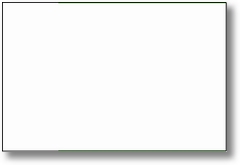The Pakistani Flag is Unislamic!
Before I can explain why, I must mention that our Government of Pakistan thinks that the flag was designed by Jinnah, while other sources say it was Syed Amir-uddin Kedwaii. We need to get our facts right so that we can blame whoever designed it.
According to Wikipedia:
In the centre is a white crescent moon, representing progress, and a white five-pointed star, representing light and knowledge. The flag symbolizes Pakistan’s commitment to Islam, the Islamic world and the rights of religious minorities.
But, it looks like the flag of our “Islamic Republic of Pakistan” is not really Islamic! The star and crescent symbols that are normally associated with Islam are really the remnants of sun/moon/sky worshippers, as this about.com page explains (and I completely agree with it). They say:
The crescent moon and star symbol actually pre-dates Islam by several thousand years. Information on the origins of the symbol are difficult to ascertain, but most sources agree that these ancient celestial symbols were in use by the peoples of Central Asia and Siberia in their worship of sun, moon, and sky gods. There are also reports that the crescent moon and star were used to represent the Carthaginian goddess Tanit or the Greek goddess Diana.
So even though a lot of Muslims worshipped Diana too (and a couple of them wanted to create demi-gods with her), that is no excuse to adopt this symbol to represent Islam. So how did it begin? The page explains:
It wasn’t until the Ottoman Empire that the crescent moon and star became affiliated with the Muslim world. When the Turks conquered Constantinople (Istanbul) in 1453, they adopted the city’s existing flag and symbol. Legend holds that the founder of the Ottoman Empire, Osman, had a dream in which the crescent moon stretched from one end of the earth to the other. Taking this as a good omen, he chose to keep the crescent and make it the symbol of his dynasty.
So not only are we using unislamic symbols that used to represent false gods, we adopted this symbol on the whim of an emperor who took a dream as a good omen. I think our flag was copied from Turkey too, and even though the Turks are ‘recovering’ from Islam and are embracing ‘enlightenment’ in the form of skirts, bars and other hedonistic pursuits, we are still stuck with the legacy of the Ottoman Empire. Its time we changed that. In fact, a lot of Muslims reject this pagan icon on this very basis. I never knew that!
Based on this history, many Muslims reject using the crescent moon as a symbol of Islam. The faith of Islam has historically had no symbol, and many refuse to accept what is essentially an ancient pagan icon. It is certainly not in uniform use among Muslims.
So what can we do about it? Let us go back to basics like the true ‘fundamentalists’ we really are. Here’s the Sunnah:
The early Muslim community did not really have a symbol. During the time of the Prophet Muhammad (peace be upon him), Islamic armies and caravans flew simple solid-colored flags (generally black, green, or white) for identification purposes. In later generations, the Muslim leaders continued to use a simple black, white, or green flag with no markings, writing, or symbolism on it.
So before we use this new-found knowledge to fix a few flags, here is the link to the original page that I have stolen the quotes from [link].
Redesigning the Flag of Pakistan
We all know that the “progress, light and knowledge” talk is BS, so, let us attempt to fix the blunder made by our ancestors, and see what our flag should have looked like. Here is the flag as we have right now:

Let us remove these pagan symbols from the flag first of all:

This already looks much better. Now if we decide to go one step further, we can also try to see if separating religion from state can really bring peace. Green is universally though of as the color of Islam. Since we don’t really follow Islam as we should (or at least, I don’t), so like our hearts, let us remove that symbol from our flag too. This is what we end up with:

Instant peace!!
This is not just the universally accepted flag of peace, it is also one of the original flags of the Prophet. Islam, as we know, is supposed to be the religion of peace, so the white flag (derived above) is a better option for Pakistan on more than one levels.
In the next section, we will help out our other Muslim brothers.
Removing Pagan Icons
Here are a few ‘before and after’ flags of the Muslim(ish) nations – namely Algeria, Azerbaijan, Comoros, Malaysia, Maldives, Mauritania, Pakistan (already done), Tunisia, Turkey, Turkemenistan and Uzbekistan, minus the star and crescent:

A few countries end up with identical flags, and will probably need to redesign them, but that is somebody else’s problem, not mine.
Credits: About.com for this invaluable information, and my neighbor’s wireless signal that allowed me to spend “the dark hour” on this ‘research’.
 I remember it very clearly – it was 2001 when I discovered
I remember it very clearly – it was 2001 when I discovered 

 So the
So the 


